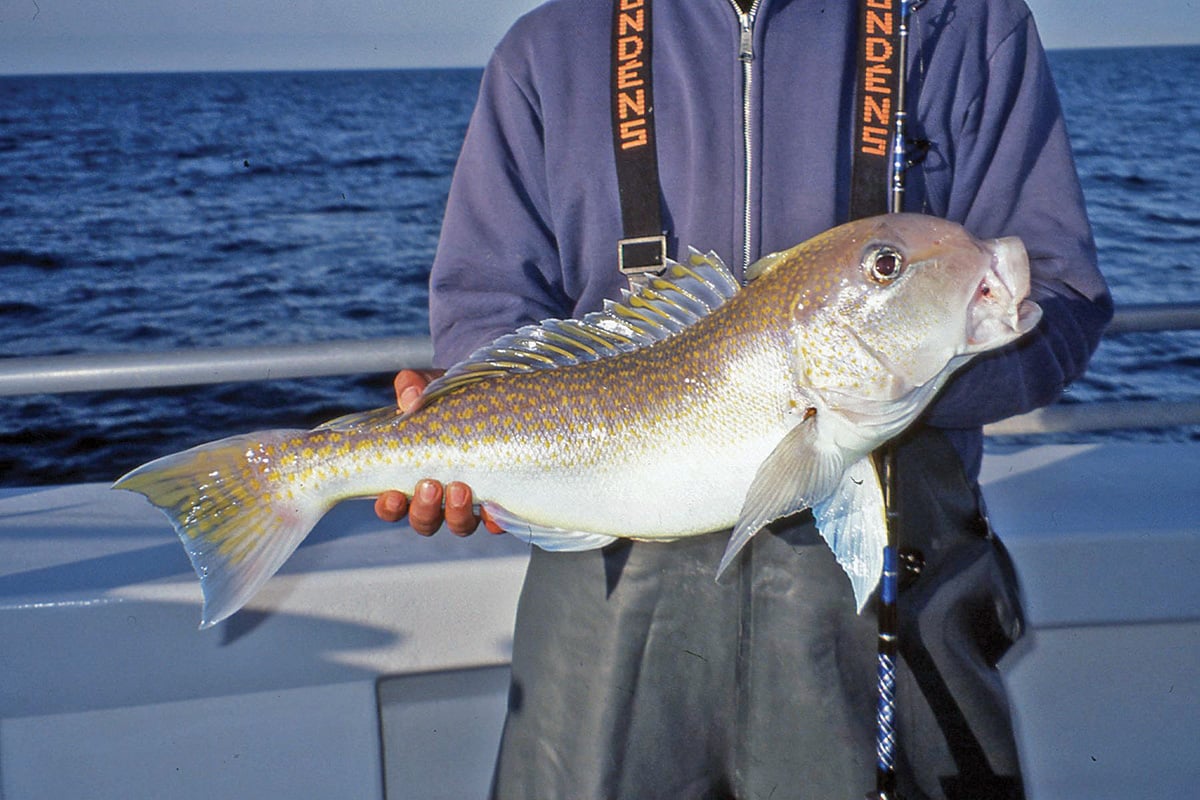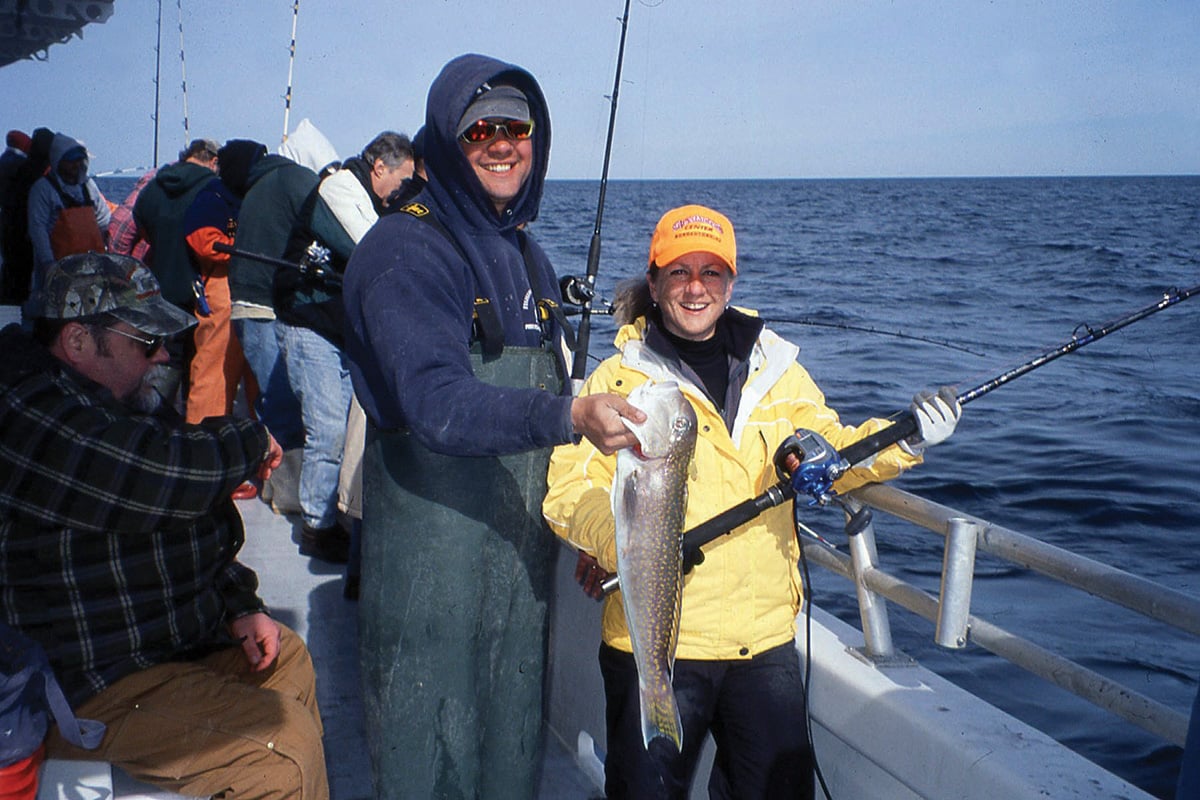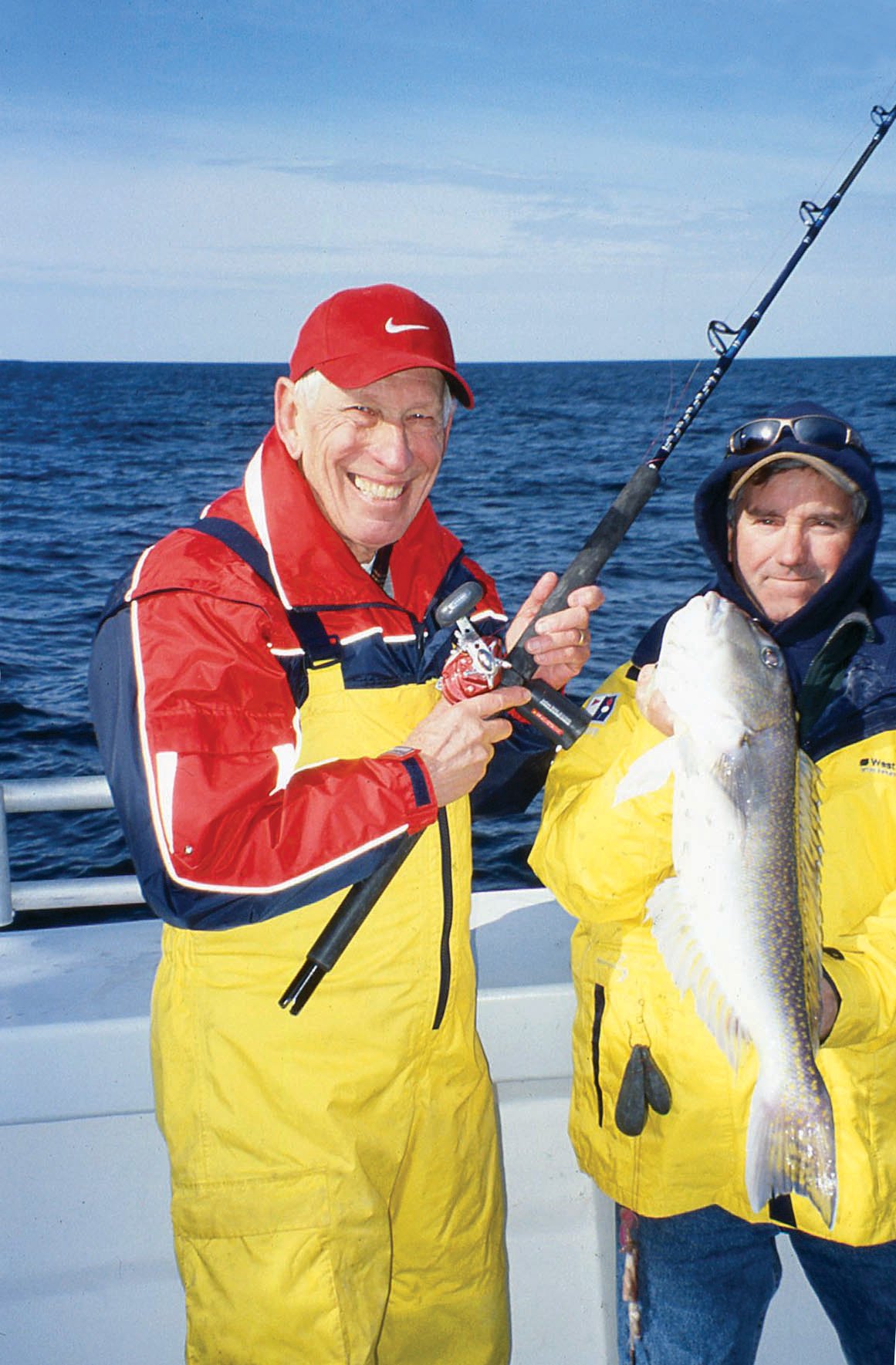
The engines had just shut down and the quiet morning air was a delight. Moments later the horn blasted away, signaling it was time to send the rigs to the bottom. The ensuing drop seemed to take an eternity, with the reel’s tiny screen moving upward as the pair of 16-ounce sinkers headed to the bottom far below.
Suddenly the sinkers touched down and the screen stopped at 51 fathoms, which relates to a depth of 306 feet, really deep drop fishing.
For a moment I was daydreaming; the sun was just beginning to peak over the horizon and all of us along the rail had just done the same thing, after a cozy night of sleeping on the bunks as we headed seaward. But my daydreaming came to an abrupt halt, as my heavy action rod—built to accommodate a couple pounds of sinker weight—was suddenly yanked downward and practically ripped from my hands. Responding instinctively I reared back and set the hook, and the rod was just as promptly pulled down again!
So began what proved to be a hectic day not quite a hundred miles from shore. Not only was I already hooked up, but so were a half dozen others along the rail, with “I’m in,” or “wow, I’ve a big one,” and even “Mate, I’ll need you to gaff this one to get it aboard!” And that’s even though he still had to crank a hundred times or so to bring what ultimately was a hefty tilefish into gaffing range.
Weather permitting, scenes like this are occurring weekly throughout the summer and well into late fall, as Jersey Shore party boats squeeze it into days when the inshore fishing isn’t bringing out the crowds. Most are trips of 20 to 24 hours duration, departing around 10 p.m. although a few boats extend the duration to 36 hours, thus ensuring an opportunity to fish from daybreak until dusk on the far offshore grounds.
With the stress current Jersey regulators are obliging inshore anglers to adhere to I’ve found the deep drop fishing for tilefish to be among the most rewarding fishing and regularly use it to fill my wife June’s freezer with some of the most delicious fish the Atlantic has to offer. It’s not necessarily hard fishing either, but as is the case to be successful, planning and preparedness are the keys to success.
Geared Up
For starters, here are some ideas to utilize some of the tackle that you may currently have. A medium to heavy outfit is best, as you’ll be most often using lots of sinker weight—16 to 40 ounces to hold bottom—and a soft tipped rod just isn’t practical. Avoid too small a reel, as its small diameter spool will result in your making twice as many cranks of the reel handle to retrieve. A typical 3/0 or 4/0 size multiplying reel works fine, loaded with 40- or 50-pound test fine diameter, no stretch line, which will make for ease in feeling a strike to 300 feet or more below.
Over many seasons of enjoying this deep drop fishing I’ve moved to a battery-powered electric reel, which I’ve found to be especially effective. When I hook up I fight the tilefish in a conventional way, but simply use the electric retrieve feature when the skipper decides to change to a new location, or I’m just reeling in to check my bait after missing a strike.
With respect to terminal rigging, a pair of hooks rigged on a standard high-low bottom fishing rig works fine. Just attach a pair of 4/0 through 7/0 size hooks designed for natural baits and snelled to 18 inches of 40-pound test leader material to the rig. Then snap a sinker or two to the sinker snap and you’ll be ready to bait up and send the rig down to the bottom once the fishing grounds are reached. Use sufficient sinker weight to keep your line perpendicular to the bottom at all times. Really, it’s that simple.

Onboard Advice
By all means seek the council of one of the mates, as they may suggest variations of a bottom rig that recently may have been more successful than the one you plan to use, i.e. they may suggest a foot or two of leader material between the high-low rig and the sinker, raising the baits farther off the bottom. They’ll also ensure that you’re placing the baits on the hooks correctly, with the hook exposed from the 4- to 6-inch long squid, bunker or herring bait so it can quickly penetrate, as the tilefish are apt to quickly inhale the bait, requiring a quick hook setting response from you.
It’s worth noting that much of the bottom you’ll be fishing is irregular, with tilefish regularly burrowing into the sand or mud bottom, where they position themselves, just finning in place and waiting for the current to sweep forage species along the bottom, where they promptly exit their burrow and inhale their dinner.
Once you’re hooked up you’ll find that the tilefish is a determined adversary. However, quite often, after you’ve battled it a hundred or more feet from the bottom, it will appear as though you’re reeling in dead weight, as the change in water pressure often completely negates their ability to resist. So just keep reeling and give a shout to the mate so he’s alongside you, rigged and ready to gaff as you bring the big tile to the surface.
If you’ve not had tilefish, believe me you’ll find it’s about the most enjoyable seafood treat that you’ve ever prepared at home!

| RACK TIME: REST UP FOR THE ARM-WEARY |
|---|
| All too often anglers congregate and talk or play cards for most of the night. This has them pooped before lines even go into the water. Instead, bring along a pillow and blanket, or a small sleeping bag, and either rent a bunk or just hit the sack on an available bench seat. Once the grounds are reached you’ll be rigged, ready and rested, all prime considerations, for as soon as the signal is received to send the rigs to the bottom you’ll begin what may prove to be upwards of eight hours spent at the rail. Believe me, you’ll be happy to have enjoyed a good night’s sleep!
Milt Rosko |

